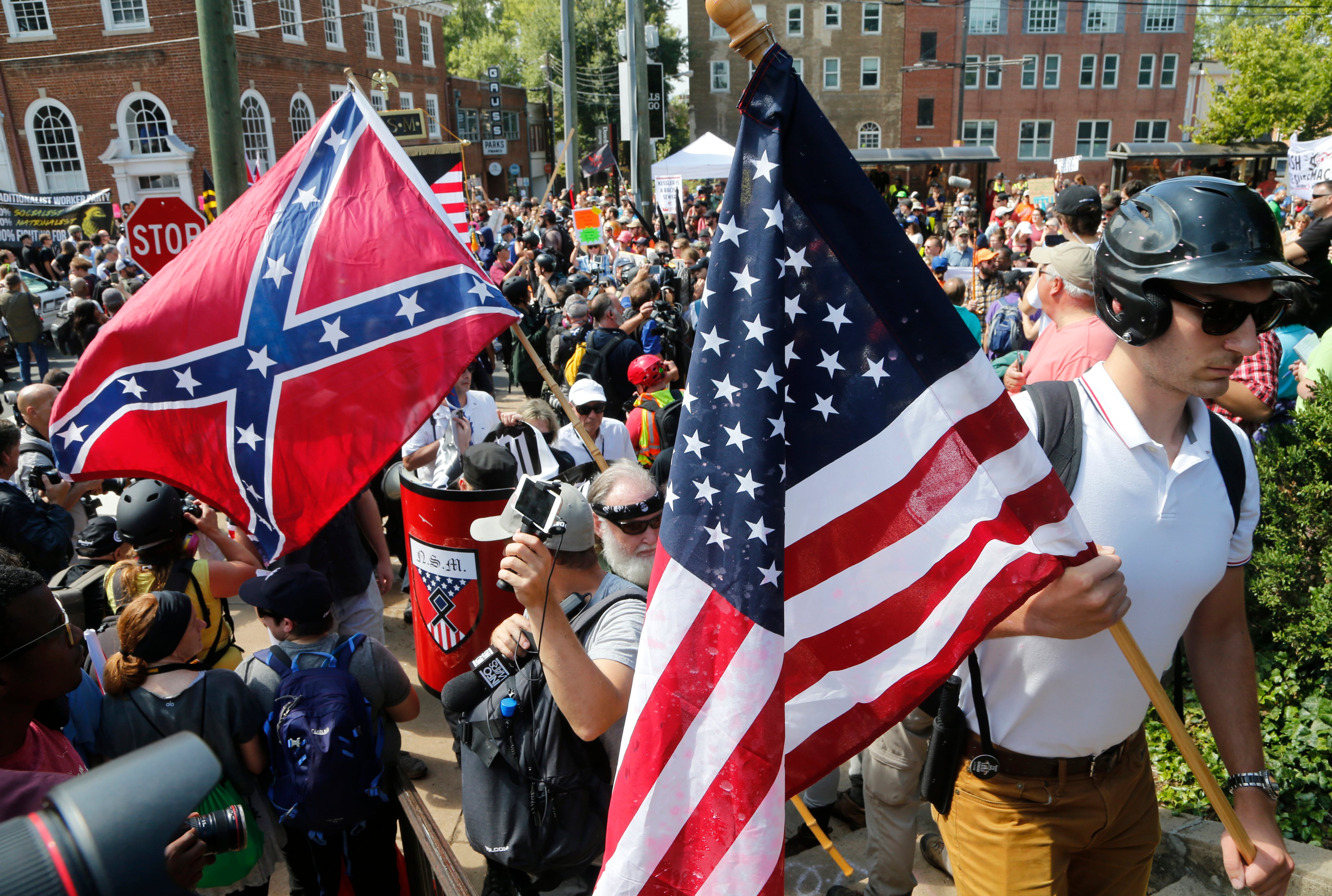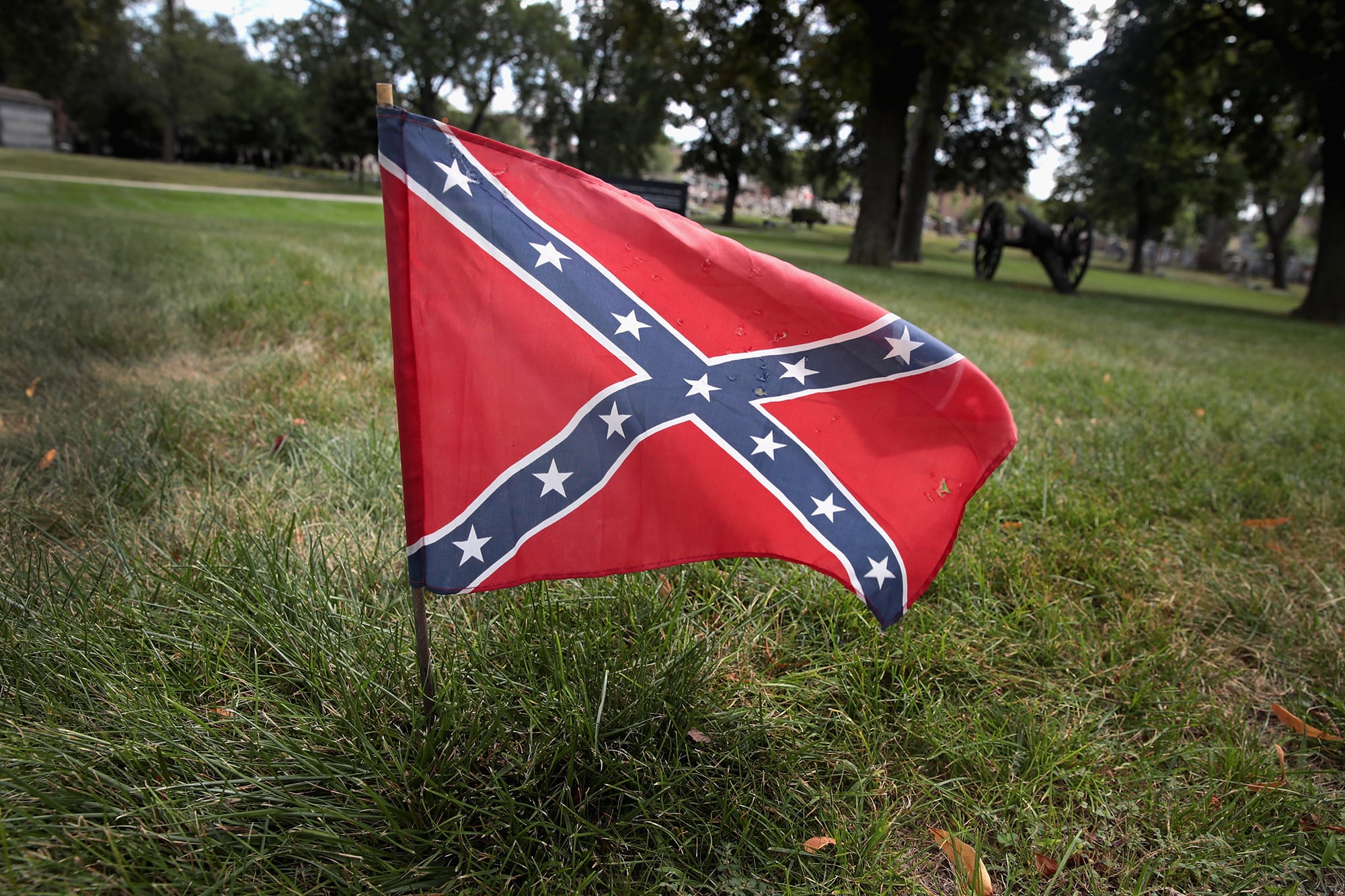As I travel to Fort Hood, Texas, my fourth assignment as an Army officer, I reflect on the names of the Army installations that have shaped my career and on the twisted irony that all of them bear the names of Confederate generals.
With the wave of protests that have enveloped the globe following the killing of George Floyd, it is time for the United States Army to unequivocally reject the Lost Cause mythology and the undertones of white supremacy that inspired the naming of 10 Army installations across the South. The myth of the Lost Cause is comprised of various pseudo-historical interpretations of the Civil War. These interpretations commonly assert tenets such as: the war was about secession, not slavery; African Americans were loved by their masters and unprepared for freedom; Confederate soldiers were heroic and chivalrous; Robert E. Lee was the most noble of them all; and the South was defeated militarily only because of the North’s overwhelming access to men and resources.
RELATED

Three principles should guide the Army’s rejection of these myths. First, it is counterproductive for military personnel who take oaths “to support and defend the Constitution against all enemies foreign and domestic” to serve on bases named in honor of the nation’s greatest domestic enemies. Second, such names are disrespectful to African Americans’ selfless service to the nation during wartime. Finally, these names serve as a reminder of the horrors of the Jim Crow regime and are undeserving of such reverence today.
We last visited this issue as a nation in 2015, in the aftermath of Dylann Roof — a white supremacist and domestic terrorist enamored with Confederate symbology — and his brutal murder of African Americans during Bible study at a Charleston, South Carolina, church. In response to calls for the Army to rename its bases memorializing Confederate officers, the Army officially proclaimed the bases were named after Confederates in the “spirit of reconciliation.” However, history has proven this to be inaccurate.
Typically, the losing side of a civil war is reconciled via the loss of its cause, symbols, and leaders. Look no further than the guillotines of the French Revolution or the widespread executions in the aftermath of the Russian civil war. So how did America come to name its Army bases after insurgents and traitors who sought to drive a permanent wedge between these United States? The answer lies in institutional racism and the mythology of the Lost Cause.
Following the intensely contested and controversial presidential election of 1876, federal troops were removed from the South in exchange for Democratic support of anti-slavery candidate and ultimate winner Republican Rutherford B. Hayes. This unwritten agreement is known as the Compromise of 1877, and it gave the White House to Republicans and the South to the adherents of the Lost Cause. By 1917, the War Department — the precursor to the Department of Defense — needed to build new camps and bases to train what would be the American Expeditionary Force of World War I. The War Department was more than willing to accommodate Southern sensibilities by permitting new bases and camps in the South to be named after “Confederate commanders.” The first of these new installations were Camps Lee and Beauregard in Virginia and Louisiana. Today, Fort Lee is an active-duty installation and Camp Beauregard is operated by the Louisiana Army National Guard. The former is named in honor of Gen. Robert E. Lee, commander of the Army of Northern Virginia, and the latter in honor of Gen. Pierre G.T. Beauregard, the first Confederate general officer and the commander who ordered Fort Sumter’s surrender before negotiations devolved into the first shots of the Civil War.
Between World Wars I and II — over 50 years after Lee’s surrender — all 10 bases would spring up across the South and as far as Texas. Some of these bases are among the Army’s largest and most famous. For instance, Fort Bragg, named for Braxton Bragg, is the home of the Airborne and Special Operations Forces and is the most populated base in the United States. Across the South, and even west of the Mississippi River, there are bases big and small that bear the names of defeated Confederate generals such as Pickett, Hood, Benning, and Gordon. Of note, John Brown Gordon, for whom Fort Gordon is named, is widely accepted to have been a senior leader in the first rendition of the Ku Klux Klan. Through memorializing unworthy heroes, these bases further reinforce the Lost Cause narrative of valiant Southern officers fighting to preserve their way of life and states’ rights while buttressing the social system of Southern apartheid known as Jim Crow.
RELATED

Upon entering military service, all personnel swear to defend and pledge allegiance to the Constitution and its principles. This oath is solemn and steeped in tradition. In fact, it is customary for service members to reaffirm the oath with every promotion or reenlistment. Surprisingly, the high esteem in which all service members hold the oaths of enlistment and commissioned officers is juxtaposed by the stark reality that the Army honors soldiers who cast their oaths aside and waged war against the progenitor of today’s Army. Notwithstanding slavery, this fundamental truth alone makes it unfathomable to name installations after men who took up arms against their country and former comrades. In this instance, there is no way to separate the men from the cause. One cannot praise Robert E. Lee’s loyalty to Virginia and ignore his disloyalty to the United States. One cannot discuss John Brown Gordon’s tactical brilliance or leadership qualities and ignore his early calls for secession and his post-war service as a leader of the Ku Klux Klan. These men may have been reconciled and their citizenship restored for the sake of the republic, but their records as oath breakers cannot be reconciled without the tacit underwriting of the cause for which they fought, and the American lives lost upon their orders. The Civil War was not fought between an aggressive federal government and disenfranchised citizens advocating for states’ rights. It was fought because the insurgents who would call themselves the Confederate States of America were willing to fire upon their own countrymen out of fear that the democratic process would supplant their dominance over enslaved black people.
The naming of bases for Confederate officers dishonors the military contributions of African Americans, especially those who paid the ultimate sacrifice in service to the nation. Since the death of Crispus Attucks in front of Boston’s Old State House in 1770, African Americans have died in defense of the American ideal of freedom, despite being considered unworthy of the pithy rights Thomas Jefferson proclaimed in the Declaration of Independence. In every American conflict, black citizens, without fail, have lined up in droves, willing to water the tree of liberty with their patriotic blood only to return to lives of second-class citizenry and humiliation at the hands of other Americans for whom they fought. For example, in the Spanish-American War, the 9th and 10th Cavalry Regiments (The Buffalo Soldiers) were described as most “gallant and soldierly” during four months of fighting in Cuba. In World War I, the 369th Infantry Regiment, known as the “Hellfighters” by their German enemies, spent more time in combat than any other American unit in the war. In fact, the 369th was attached to French forces because no commanders in the American Expeditionary Force would accept black troops, who were believed to be innately afraid to fight. In World War II, the 333d Field Artillery Regiment served with distinction during the Battle of the Bulge. Each of these units, after having served with such distinction, returned home to the realities of strict segregation, disenfranchisement, lynchings, and other forms of racial terror. What does the United States government communicate about how it values its honored dead when it names its installations after men who sought to destroy the United States and perpetually keep the ancestors of more than 20 percent of its soldiers enslaved?
Finally, the Jim Crow regime of state-sanctioned apartheid still lingers in the cultural memory of African Americans. Many black citizens living today grew up during the height of this stained time in American history. This generational trauma has since been passed down to their children and grandchildren and is only compounded by new events. For reference, my mother was 1 years old when Emmett Till was brutally murdered near Greenwood, Mississippi, in 1955. Although Jim Crow was facilitated in the capitol buildings across the South, its daunting power lied within the wide shadow it cast over Southern life. Monuments, parks, and buildings were erected to remind African Americans of their respective lot in life, and that their former masters still controlled everything around them. When an African American person hears the names of Gen. Robert E. Lee and other high-profile Confederates, it evokes several emotions, none of which are patriotism or pride. I still remember as a young lieutenant, saluting the flag to the sound of reveille playing on physical training fields of Fort Lee, Virginia, the countless field exercises conducted across the training environments of Fort Benning, Georgia, and the adrenaline-filled jumps over the drop zones of Fort Bragg, North Carolina. To be clear, I am proud of all those moments. However, I am incapable of ignoring the deep pain and utter disrespect to my human dignity and that of my ancestors that I feel when I approach large welcome signs bearing the names of men who fought to create a government whose foundation would rest upon the “physical, philosophical, and moral truth” that black people were not equal to their white counterparts and that slavery was their natural and normal condition.
These bases would further reinforce the Lost Cause narrative of valiant Southern officers fighting to preserve their way of life and states’ rights while buttressing the social system of Southern apartheid known as Jim Crow through memorializing unworthy heroes. There are those who will assert that changing the names of installations would dishonor the memory of soldiers who left these shores never to return. However, this assertion falls flat. Service members enter the crucible of combat under the American flag, bound by an oath to support and defend the Constitution. Our fallen comrades fought to preserve the American ideal and the nation’s interests. Service members bear no allegiance to bases or the names that identify them. These symbols continue to divide our nation more than 155 years after General Lee surrendered to General Grant at the Appomattox Courthouse.
A mentor once told me, “The standard you walk by is the standard you set.” By unequivocally rejecting Confederate symbols and the veneration of its defeated leaders, the Army would honor the sacrifices of all its soldiers — past and present — and its overt faith and allegiance to a Constitution founded upon the inalienable rights of all human beings.
Earl M. Wilson is from New Orleans. He is an active duty Army judge advocate in the rank of major. The information expressed within this article represent the views of the author and in no way represent those of the U.S. Army, Department of Defense, or U.S. Government.
Editor’s note: This is an Op-Ed and as such, the opinions expressed are those of the author. If you would like to respond, or have an editorial of your own you would like to submit, please contact Military Times managing editor Howard Altman, haltman@militarytimes.com.





